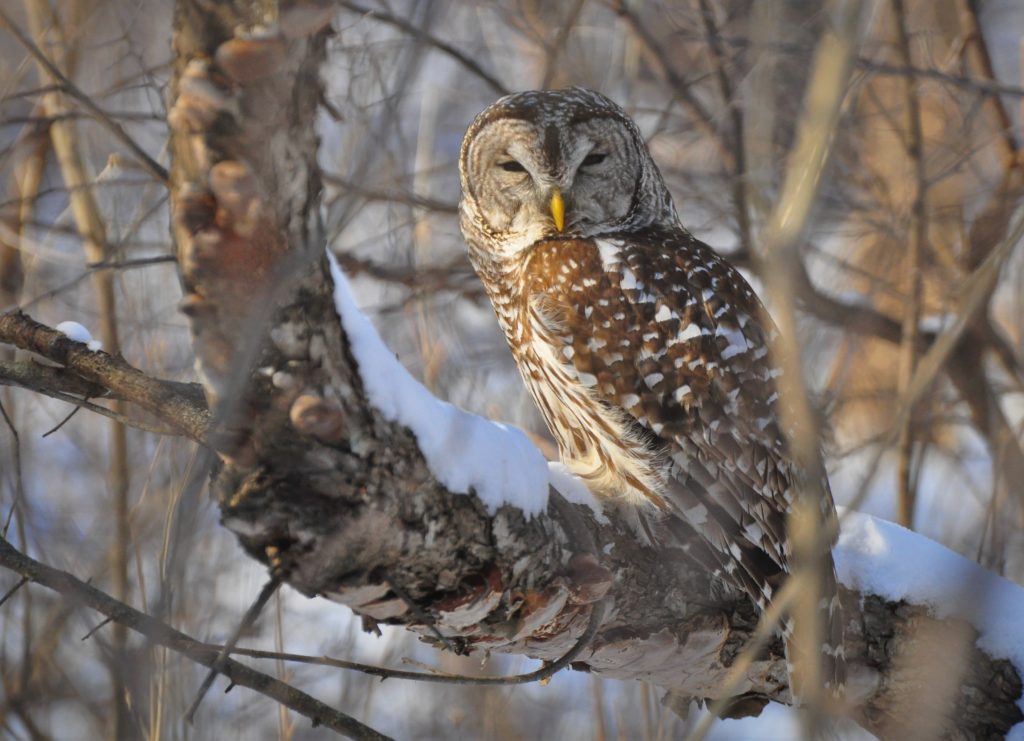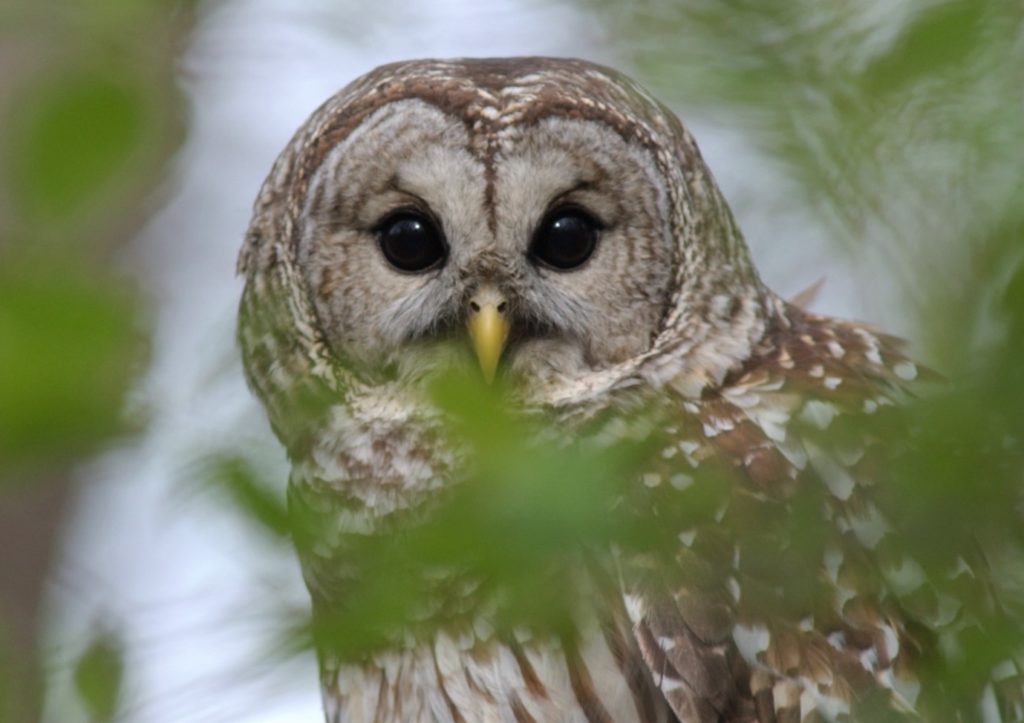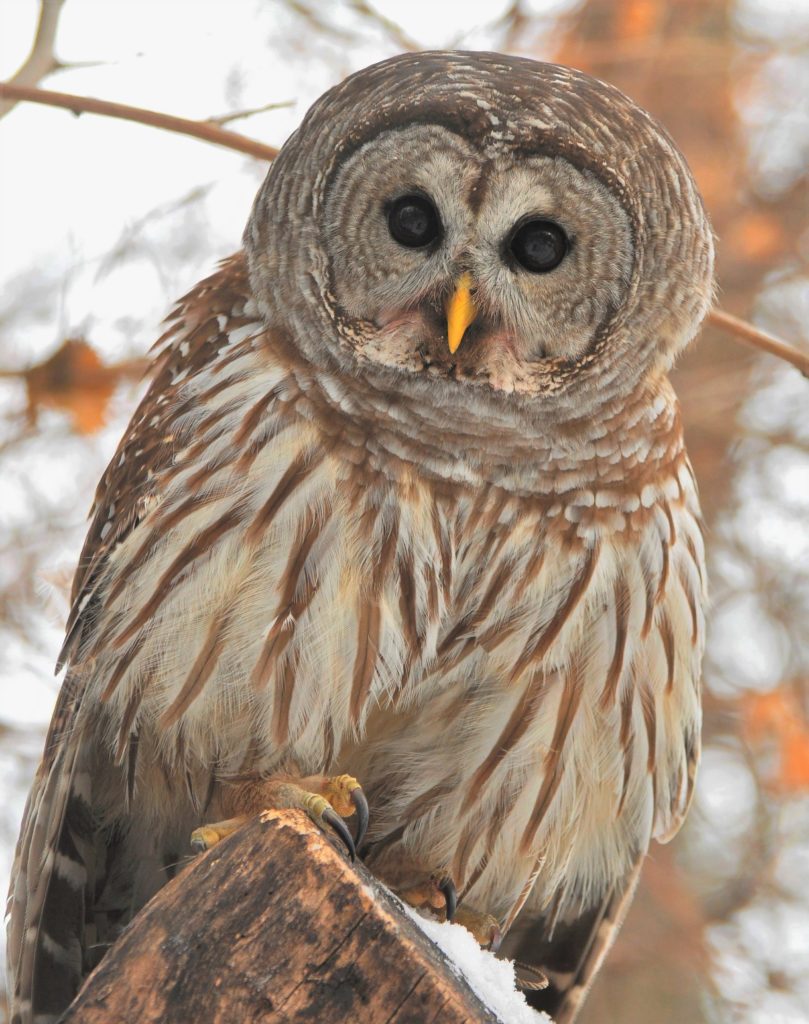Photography courtesy of Lowell Washburn, all rights reserved.
The barred owl’s signature greeting — “Who cooks for you? Who cooks for you all?” – would be hard to mistake for any other sound. That distinctive call is currently echoing through winter woodlands statewide. Although once a rare sound across much of Iowa, the baritone hooting is becoming increasingly familiar to both rural and urban residents.

Slightly smaller than its great horned cousin, the barred owl is characterized by dark eyes, vertically striped breast plumage, rounded head, and a complete lack of ear tufts. Like most of their kind, barred owls are largely nocturnal, are equipped with silky feathers enabling totally silent flight, have excellent hearing, and poses extraordinary night vision. Less aggressive than the horned owl, barred owls are premier mousers and subsist largely on a rodent diet. They prefer to nest in natural tree cavities but will also utilize specially constructed wooden nest boxes.

Historically, barred owls were common inhabitants of the heavily timbered blufflands bordering the Mississippi river, and in southern Iowa’s extensive forest lands. But times have changed. Today, the species can be found wherever mature, cavity producing trees exist. And although no one can say for certain why the barred owl has recently expanded its range, there is no arguing that the species has proven to be extremely successful at that endeavor. No longer confined to the quiet seclusion of Iowa’s larger forests, barred owls are currently staking territories in farmstead windbreaks, along interior tributary streams, and in city parks across the state. During recent years, they have even become increasingly common residents of our most densely populated, residential neighborhoods.

Of the half dozen owl species that inhabit our Iowa woodlands, none produce more volume or generate a greater variety of calls than the barred owl. In addition to the trademark “who cooks for you”; the barred owl adds many additional sounds to its repertoire – especially during the early spring nesting season. I won’t [and can’t] attempt to describe the species’ maniacal caterwauling. Let’s just say that when an enthusiastic crooner goes into full ‘Monkey Mode’, the sound will raise the hair on the back of your neck.

But don’t take my word for it. Instead, don an extra layer of winter clothing, pull on your insulated boots, and go hear the sounds for yourself. You’ll find the excursion to be well worth the effort. Few landscapes are more beautiful than a snow-covered winter woodland bathed in full moonlight. Add the vocalizations of resident owls, fox, and coyotes, and you’ll treasure the memory for a long time to come.

 Tom Cope
Tom Cope Sue Wilkinson
Sue Wilkinson Susan Judkins Josten
Susan Judkins Josten Rudi Roeslein
Rudi Roeslein Elyssa McFarland
Elyssa McFarland Mark Langgin
Mark Langgin Adam Janke
Adam Janke Joe Henry
Joe Henry Kristin Ashenbrenner
Kristin Ashenbrenner Joe Wilkinson
Joe Wilkinson Dr. Tammy Mildenstein
Dr. Tammy Mildenstein Sean McMahon
Sean McMahon